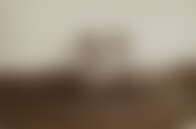History & Building

The institute
The Collegium Helveticum was founded by ETH Zurich in 1997. Its aim was to promote mutual understanding between the natural sciences, technology, the humanities, and the social sciences. Since 2004, the Collegium has been jointly supported by ETH Zurich and the University of Zurich. In 2016, the Zurich University of the Arts joined to foster exchange between arts and sciences.
The Collegium’s founding director was literary scholar and author Adolf Muschg. From 1998 to 2002, Helga Nowotny, sociologist of science and technology, lead the Collegium before she moved on to become president of the European Research Council. In the following two years, agricultural economist Peter Rieder acted as director. Under the leadership of pharmacologist Gerd Folkers from 2004 to 2015 and cultural anthropologist Thomas Hengartner from 2015 to 2018, fellows were recruited from local faculty and worked together on shared topics such as “The Role of Emotions,” “Reproducibility, Prediction, and Relevance,” and “Digital Societies.”
With theoretical biologist Sebastian Bonhoeffer assuming the role of director in 2021, the Collegium has shifted to a more international fellowship program with an emphasis on early-career fellows. With each generation of fellows, new topics of shared interest emerge and become the focus of discussions and seeds of collaborations. The diversity of the fellow community makes the Collegium an open and vibrant place for exchange across disciplines.
The building
The Semper observatory was designed in collaboration between the mathematician and astronomer Rudolf Wolf (1816–1893) and the architect Gottfried Semper (1803–1879). Opening its doors in 1864, the observatory remained a leading center for the study of sunspots for over a century. However, the rapid urban expansion of Zurich and the associated light pollution increasingly hindered astronomic observations. In 1981, the Semper Observatory was recognized as a listed building of national importance. In the mid-1990s, the observatory was adapted and redesigned to become the home of the Collegium Helveticum and now offers a shared space of exchange across disciplines as well as rooms for engaging with different audiences.